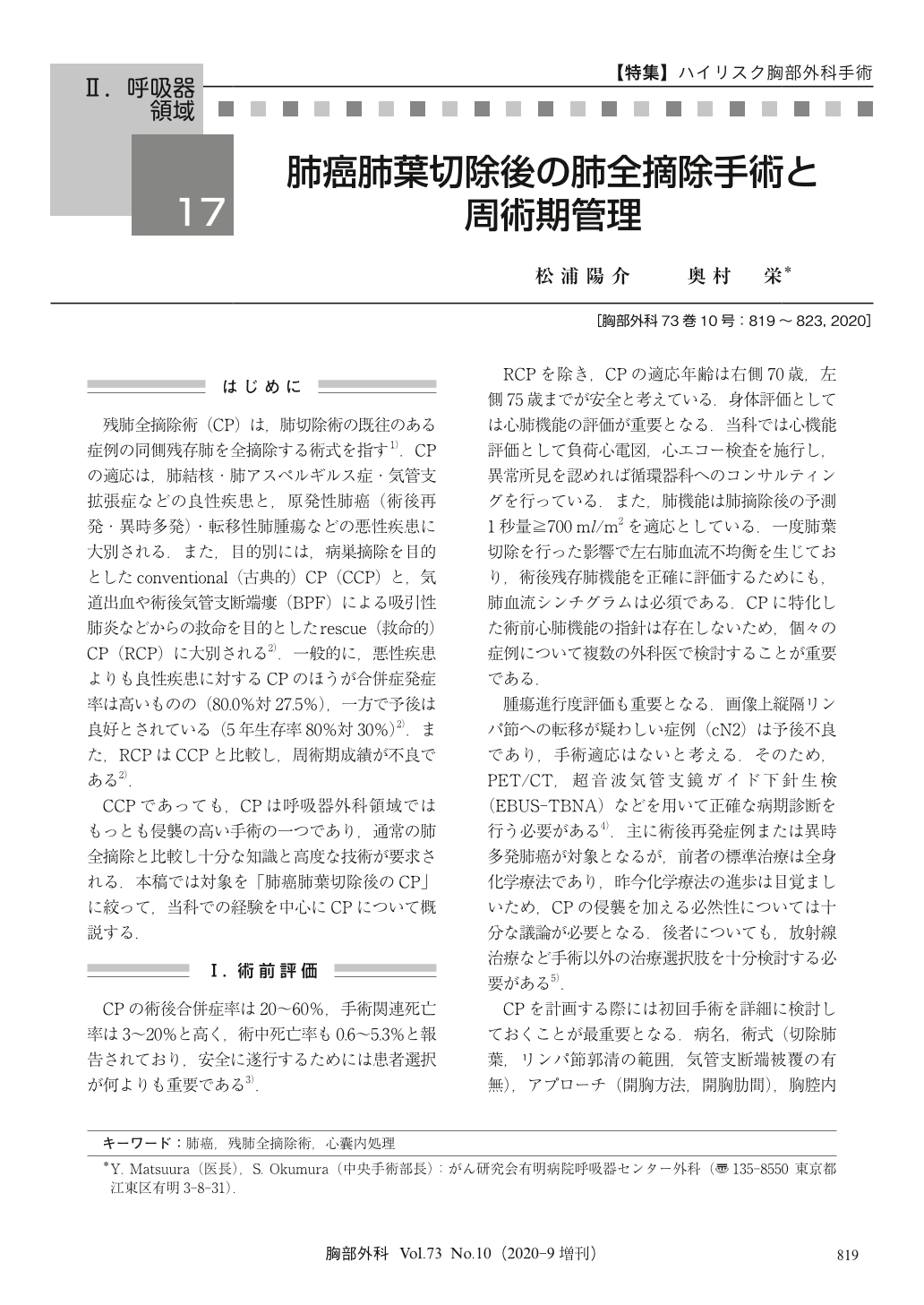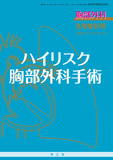Japanese
English
- 有料閲覧
- Abstract 文献概要
- 1ページ目 Look Inside
- 参考文献 Reference
残肺全摘除術(CP)は,肺切除術の既往のある症例の同側残存肺を全摘除する術式を指す1).CPの適応は,肺結核・肺アスペルギルス症・気管支拡張症などの良性疾患と,原発性肺癌(術後再発・異時多発)・転移性肺腫瘍などの悪性疾患に大別される.また,目的別には,病巣摘除を目的としたconventional(古典的)CP(CCP)と,気道出血や術後気管支断端瘻(BPF)による吸引性肺炎などからの救命を目的としたrescue(救命的)CP(RCP)に大別される2).一般的に,悪性疾患よりも良性疾患に対するCPのほうが合併症発症率は高いものの(80.0%対27.5%),一方で予後は良好とされている(5年生存率80%対30%)2).また,RCPはCCPと比較し,周術期成績が不良である2).
Completion pneumonectomy (CP) is the complete removal of lung tissue remaining after an initial ipsilateral partial pulmonary resection and is one of the most invasive operations in the field of general thoracic surgery. Mortality and morbidity rates are higher after CP than standard pneumonectomy. CP is a highly demanding procedure, usually due to major pleural and sometimes pericardial dense adhesions from previous surgery or infection. Intra-pericardial control of the pulmonary artery and veins is recommended to avoid vessel injury. Therefore, this operative intervention should be performed only by experienced thoracic surgeons on carefully selected patients in order to improve postoperative outcomes. Preoperative pulmonary and cardiac functions are decreased by the previous procedure. In addition, the rate of complications is high because of excessive operative invasiveness. Therefore, preoperative assessment, surgical indication, low invasive surgical technique, and good postoperative management are very important elements when CP is performed. On the other hands, CP may be a reasonable option for postoperative lung cancer recurrence or new primaries only in carefully selected patients, in whom the potential oncological benefits overweigh the surgical risk. This article reviews these operative knack and pitfalls.

© Nankodo Co., Ltd., 2020


